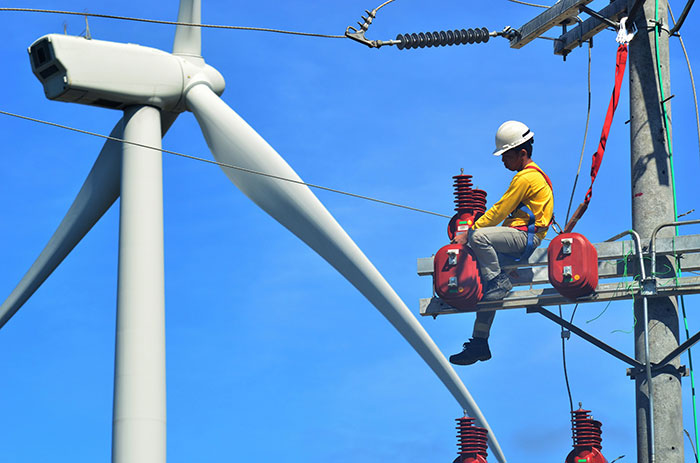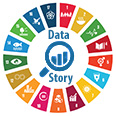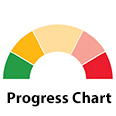Ensure access to affordable, reliable, sustainable and modern energy for all

A technician works on a wind turbine in the Philippines.
© ADBand actions remain essential to advancing just energy transitions and to meeting climate objectives.
The past decade saw 45 countries achieving universal electricity access, but little progress in sub-Saharan Africa
Global electricity access reached 92 per cent in 2023, up from 84 per cent in 2010, with the number of people without electricity dropping to 666.4 million ‒ 18.8 million fewer than in 2022. Between 2010 and 2023, 45 countries achieved universal electricity access. However, regional disparities persist. Central and Southern Asia reduced its unconnected population from 414 million in 2010 to 27 million in 2023. By contrast, sub-Saharan Africa saw little progress, with its unconnected population barely changing from 566 million to 565 million—despite coverage rising from 33 to 53 per cent— accounting for 85 per cent of the global electricity deficit. In addition, globally, 84 per cent of people without electricity in 2023 lived in rural communities.
Achieving universal access by 2030 requires accelerating electrification to 1.2 per cent annually. Unfortunately, current trends indicate that in 2030, 645 million people will remain without power. Addressing this challenge will require fresh thinking, renewed political commitment and additional funding to scale up the adoption of distributed renewable-energy technologies and business models. Off-grid solar solutions present the most cost-effective pathway ‒ potentially bringing electricity to 389 million people.
Proportion of population with access to electricity, 2010 and 2023 (percentage)

* Excluding Australia and New Zealand.
Access to clean cooking has improved, but it is far from universal
Access to clean cooking fuels and technologies reached 74 per cent globally in 2023, up from 64 per cent in 2015. Yet, approximately 2.1 billion people still rely on polluting fuels for cooking. Regional progress varies dramatically. Eastern and South-Eastern Asia, along with Central and Southern Asia, have made substantial gains in expanding clean cooking access. However, sub-Saharan Africa continues to face critical challenges, with only 21 per cent of the population having access to clean cooking.
The burden falls heaviest on poorer households, particularly affecting women and girls, who spend extensive time gathering fuel and cooking on inefficient stoves. This compromises their health, limits educational opportunities and reduces economic prospects. Current progress indicates that only 78 per cent of the global population will have access to clean cooking solutions by 2030, leaving approximately 1.8 billion people without access. Achieving universal access requires urgent action and accelerated efforts.
Population with access to clean fuels and technologies for cooking and the pathway to universal access, 2000–2030 (percentage)

Global energy consumption is increasingly supported by renewables, but more is needed to achieve ambitions
The share of renewable energy in the world’s total final energy consumption increased from 15.6 per cent in 2015 to 17.9 per cent in 2022, with modern renewables (excluding traditional biomass) increasing from 10 to 13 per cent. The electricity sector leads the growth, with renewables comprising 30 per cent of its 2022 global electricity consumption. Hydropower remained the predominant renewable electricity source, while wind and solar demonstrated the largest absolute growth ‒ tripling their combined consumption in 2022 compared to 2015. Renewable sources accounted for around 21 per cent of global energy use for heat, with almost half from traditional biomass. In the transport sector, only 4 per cent of consumption was from renewables, of which nearly 90 per cent came from biofuels.
Raising renewable-energy deployment targets, implementing stronger policy actions across all end-use sectors and expanding support to developing countries will be pivotal in advancing towards Goal 7 and meeting climate objectives.
Share of renewable sources in final energy consumption and by end use, 2015 and 2022 (percentage)

Energy intensity progress accelerated in 2022 partly due to energy crisis, but the world is not yet on track
Primary energy intensity (the ratio of total energy supply to GDP) improved by 2.1 per cent in 2022; this is more than quadruple the improvement rate in 2021, bringing the worldwide intensity to 3.87 megajoules per dollar (2021 purchasing power parity). This progress was partly driven by the reduced energy use amid the global energy crisis and high prices in 2022. Among the top 20 energy-consuming countries, 15 experienced accelerated progress during 2010–2022 compared to 1990–2010; nine nations more than doubled their average annual energy-intensity improvement rate.
Meeting Goal 7 targets on energy efficiency requires annual improvements of 4.0 per cent between 2022 and 2030. This ambitious goal is consistent with agreements from the 2023 United Nations Climate Change Conference. The uptake of renewable energy to generate electricity, as well as the energy efficiency of end-use sectors (such as buildings and transport) will play key roles in achieving targets.
Installed renewable energy-generating capacity is on a continuous rise, yet significant disparities persist
Global installed renewable-energy capacity per capita hit a record 478 watts per person in 2023, marking an annual growth of 13 per cent, driven primarily by China, Brazil and India. This achievement reflects strong momentum, with a 9.4 per cent compound annual growth rate over the past five years. However, significant disparities remain. Developed countries average 1,162 watts per person ‒ nearly three times the average of developing countries, 341 watts. While developing countries now account for 43.5 per cent of the global capacity to generate electricity from renewables, this progress masks profound inequalities. Eastern and South-Eastern Asia increased over threefold from 207 to 741 watts per person between 2013 and 2023, while sub-Saharan Africa lags with just 40 watts per person. The most vulnerable are LDCs (40 watts), LLDCs (105 watts) and SIDS (110 watts). At current rates, LDCs would need 46 years to reach the average of today’s developing countries. Without accelerated deployment of cost-effective renewable solutions, these disparities will widen, undermining the global energy transition and sustainability goals.
International financial flows continue to rebound, but remain short of 2016 peaks
International financial support of clean and renewable energy to developing countries reached $21.6 billion in 2023, an increase of 27 per cent from 2022. Solar energy led the growth, with funding rising 84 per cent to $9.4 billion, accounting for 44 per cent of total financial flows. Wind and hydropower also grew by 41 per cent (reaching $2.4 billion) and 61 per cent ($2.3 billion), respectively. However, despite this third consecutive year of growth, 2023 flows amounted to only about three quarters of the 2016 peak of $28.4 billion. In addition, in 2023, 80 per cent of commitments were distributed among 29 countries, compared to the 25 in 2022. Overall financial support lags far behind the actual needs of developing countries, particularly among LDCs, LLDCs and SIDS. To enable global progress towards Goal 7, it will be crucial to accelerate this growth trajectory while ensuring a more equitable distribution of funds.
International public financial flows to developing countries in support of clean energy, 2015–2023 (billions of constant 2022 US dollars)


